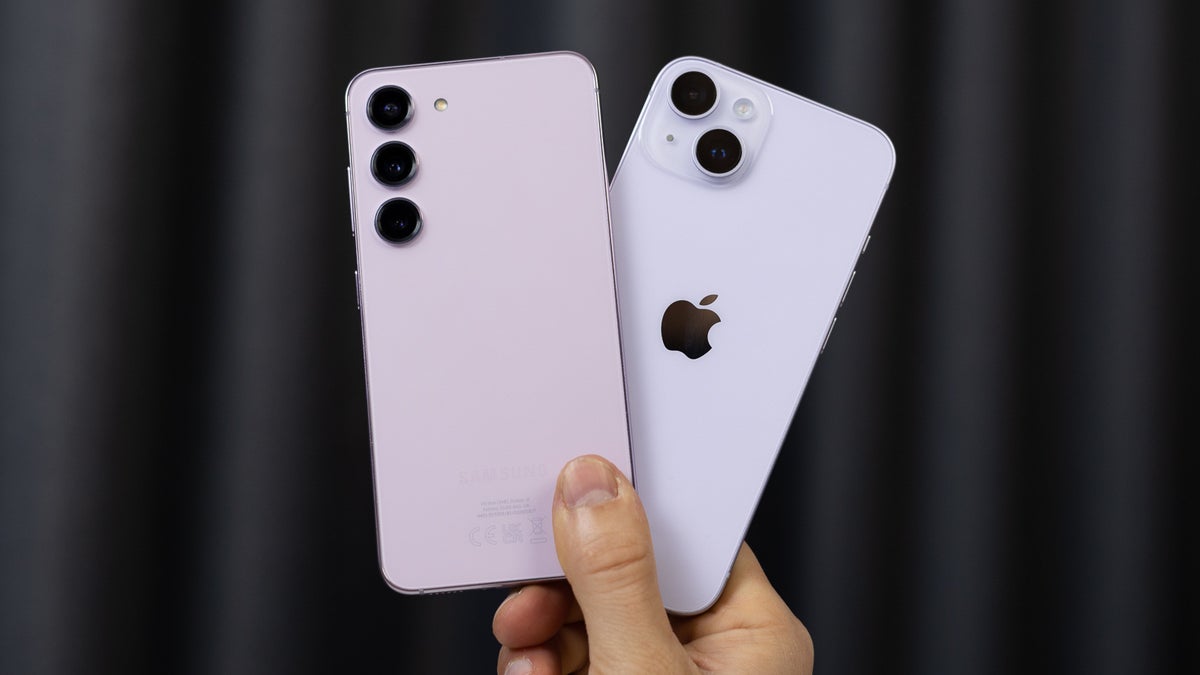Samsung Galaxy S23 vs Apple iPhone 14: expectations
Intro
Samsung will be announcing the new Galaxy S23 in early 2023 — which happens to be very, very close. And, as is usual with hot upcoming devices, we already have a lot of leaks and reports to go on.
So, we can form some sort of idea and expectations of how the S23 will be… and how it would stack up against the relentless competition. A big part of it being, of course, Apple’s iPhone 14.
- S23 to get unified design — slim, with camera rings
- S23 to have Snapdragon in all markets! (maybe, probably)
- S23 to get a slight battery bump
- No major change in camera
Table of Contents:
Design and Display Quality
OLED but one of them has an extra AM
Galaxy S23 based on leaks (Image Credit – 4RMD)
Samsung’s AMOLED screens have been excellent for years now and we can already picture the Galaxy S23 continuing this trend. Really, all it needs to do is use the same panels as the S22, which are already excellent. But hey, Samsung may sneak in a max brightness buff or some energy trickery. Or it may try to match the iPhone 14 Pro’s capability of keeping an entire wallpaper in the Always-on state when locked.
But, in general, we expect the Galaxy S23’s display to be, yet again, an industry leader with vivid colors, great sharpness, and fantastic contrast.
Apple’s iPhone 14 line has OLED screens as well — funny enough, a huge portion of them are made by Samsung (and some are manufactured by LG). So, it’s the same build quality, but tuned to Apple’s requirements. Where Samsung gives you a couple of color calibrations to choose whether you want boosted colors or tamed and realistic ones, Apple goes for only one standard calibration.
Don’t get us wrong, it looks fantastic, though it’s worth noting.
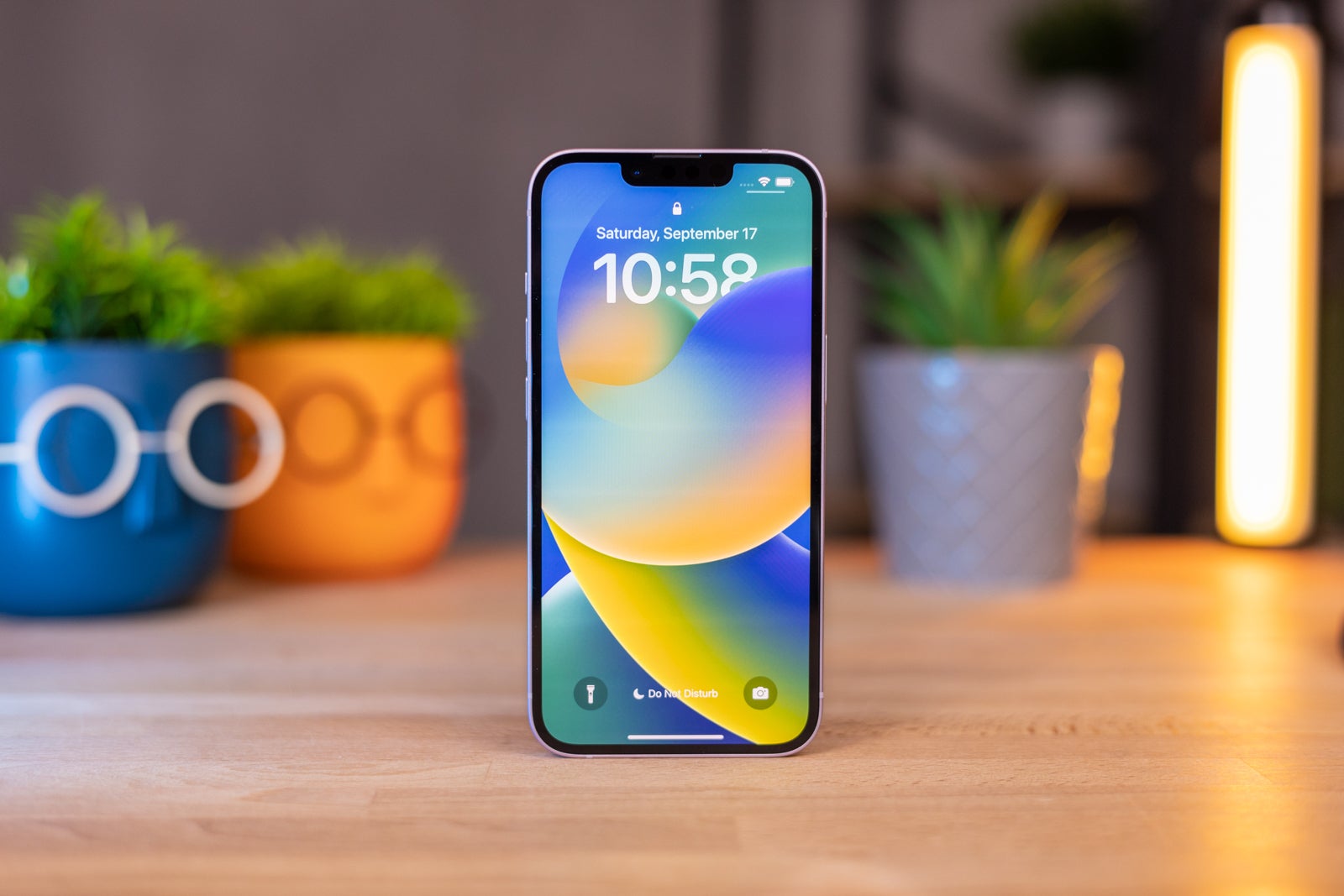
iPhone 14 (Image Credit – PhoneArena
Other features, like automatically tuning the white balance of the screen are present on both Galaxies and iPhones. So, these screens are usually a pleasure — and not a strain — to view.
As for design, many will prefer the fresh breath that the Samsung will supposedly offer — leaks show us a new look with a fully flat back and 3 protruding metal rings around the lenses on the back. On the front, of course, the Galaxy will only have a single hole for the selfie camera while the iPhone 14 still has that signature notch.
That is, of course, because Apple uses Face ID for biometric unlocks and payment authentication. It has been improved over the past 4 years and is now quick, accurate, and you barely even think about it. Samsung still prefers to stick to under-screen fingerprint scanners for that — ultrasonic technology, which has also improved in speed. The latter’s benefit is that it can accurately read a scan even if your finger happens to be smudged up, a bit too wet, or a bit too dry.
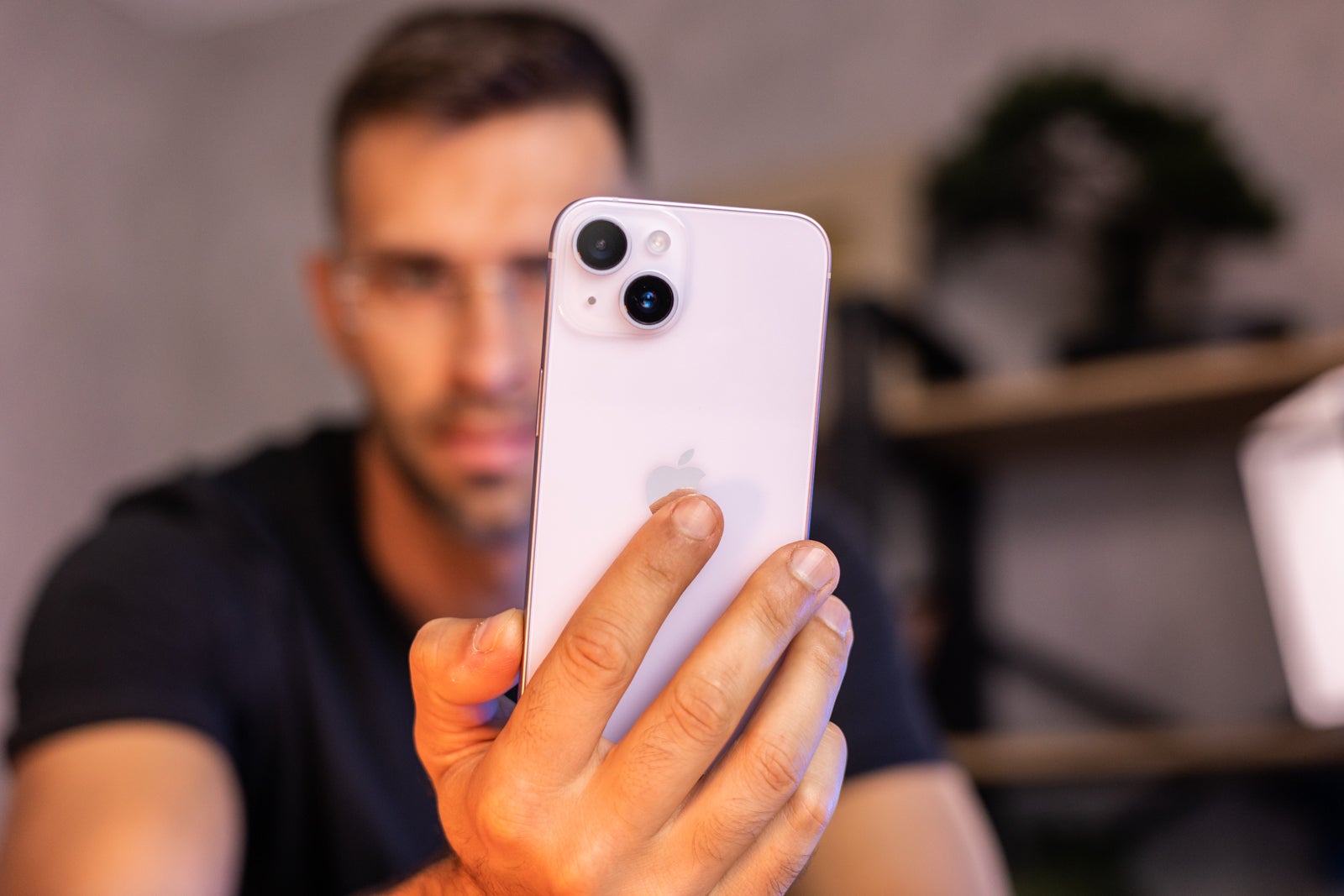
iPhone 14 (Image Credit – PhoneArena
The iPhone 14 still has MagSafe — that ring of magnets on its back that allow it to utilize various smart accessories like stands and magnetic powerbanks. These definitely improve the overall experience and it’s sometimes hard to go back to a phone that can’t just stick to a wireless charger.
On the other hand, the Galaxy S23 will have a USB Type-C port for charging and data transfer, which makes it infinitely easier to find a spare cable when you are in a pinch. And, of course it also supports wireless charging, just no magnetic sticking to stuff.
Performance and Software
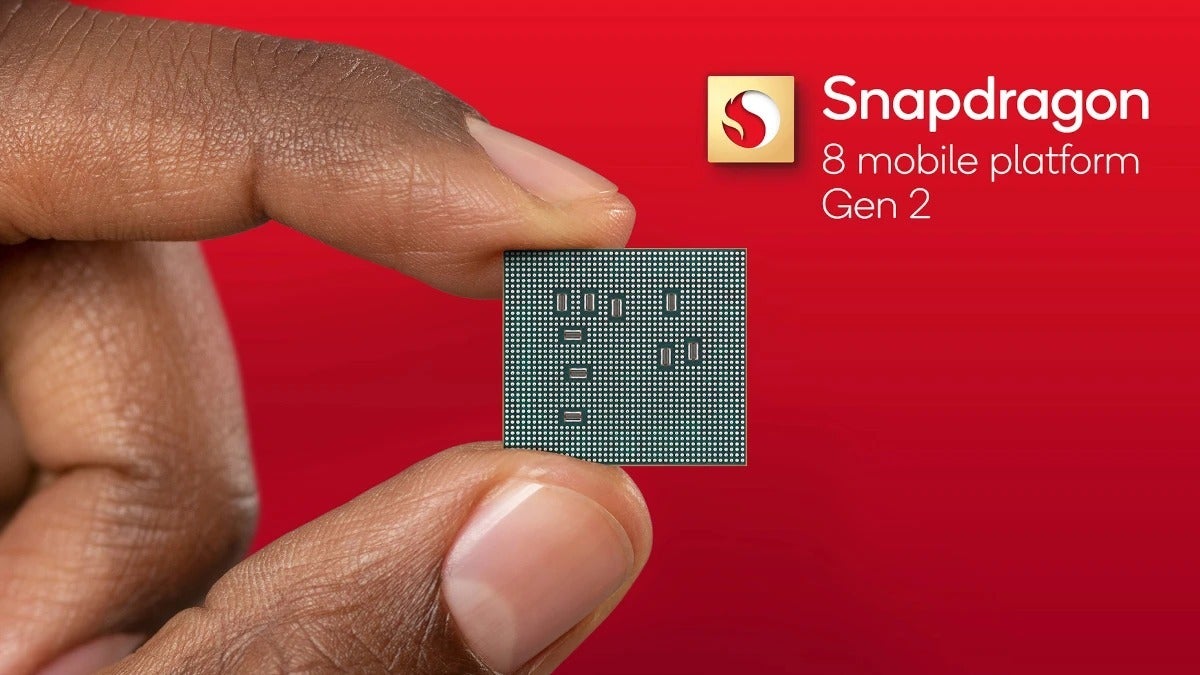
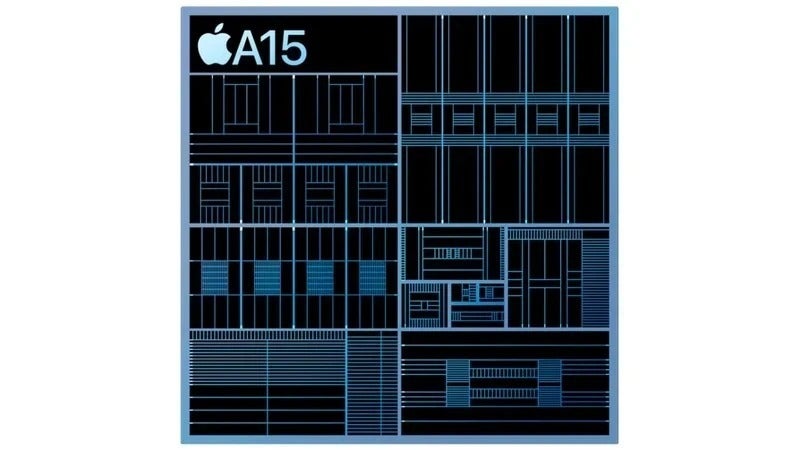
The good news is that it doesn’t need to. It can be argued that iOS 16 barely makes use of all the power that the A15 chip has on tap. And, if the Galaxy S22 series is anything to go by — the Snapdragon series will do just fine with snappy performance, flicking and flipping through apps and settings with ease.
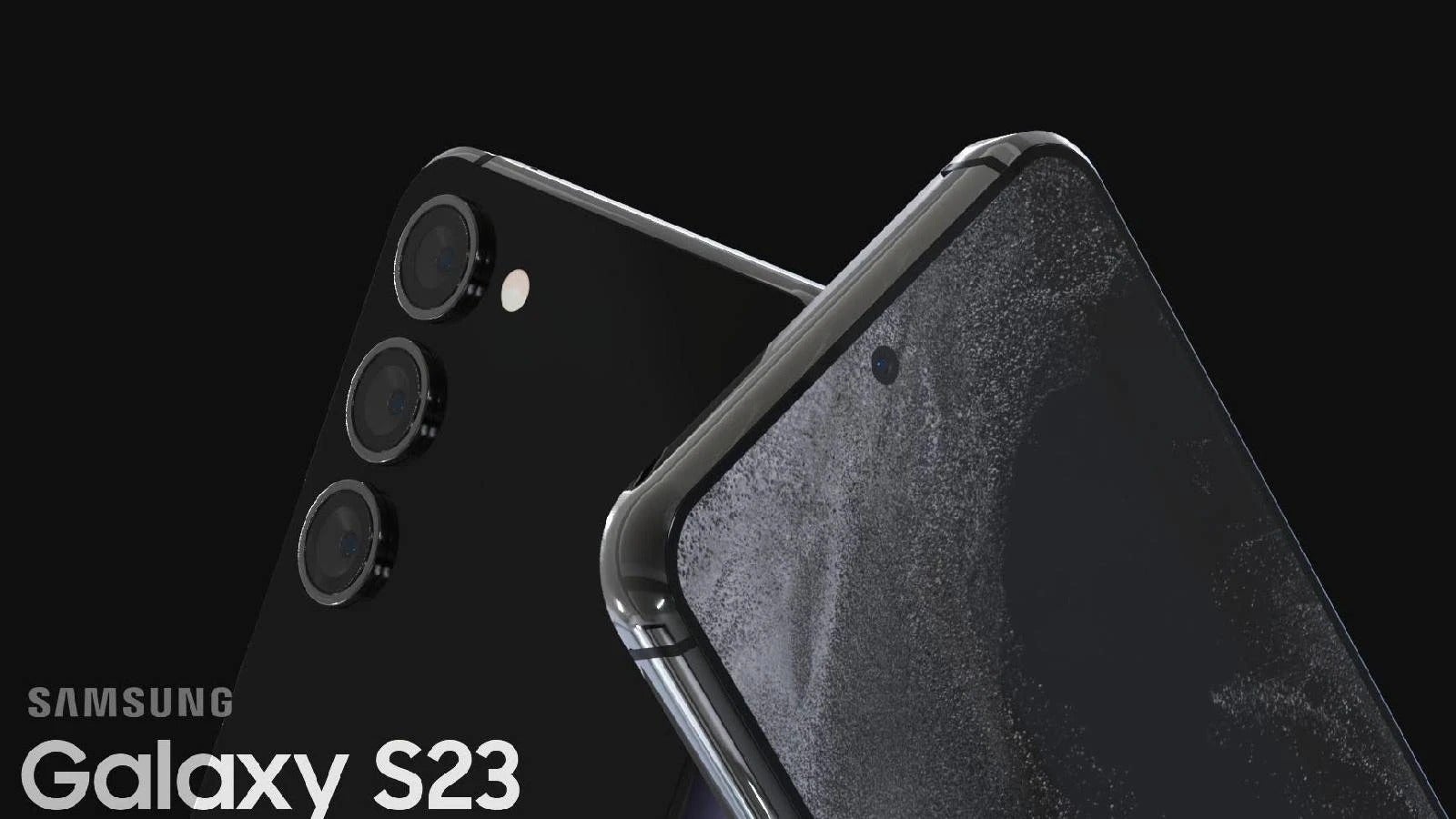
Galaxy S23 based on leaks (Image Credit – 4RMD)
Now, as for software, it has come to the point where comparing Apple to Samsung is like comparing apples to oranges. The iPhones are still much more single-task oriented phones that are very reliable and have a robust ecosystem that Apple fans enjoy day in and day out. The Galaxy’s One UI interface is more flexible, as it basically invites you to utilize its split-screen multitasking capabilities and vast customization options.
An argument can be made that users who go for the smallest, 6.1-inch Galaxy S23 probably do not do so for multitasking. However, One UI has the tendency to constantly give you access to floating windows, so you can answer that text or check that email without leaving whatever you were doing on the phone. It’s definitely a different type of workflow — one that is also hard to leave behind if you consider switching away from the Galaxy.
Samsung also has the DeX interface, which is admittedly super niche. However, if you connect the phone to an external monitor, mouse, and keyboard — you get to work in a desktop-like UI powered straight from your phone. Or, you can connect it to an old laptop and let the Galaxy “take over” its screen and peripherals. You’d be surprised to see how an old Windows machine can be revived when a Snapdragon 8 is at the wheel.
Camera
Someone here needs an upgrade
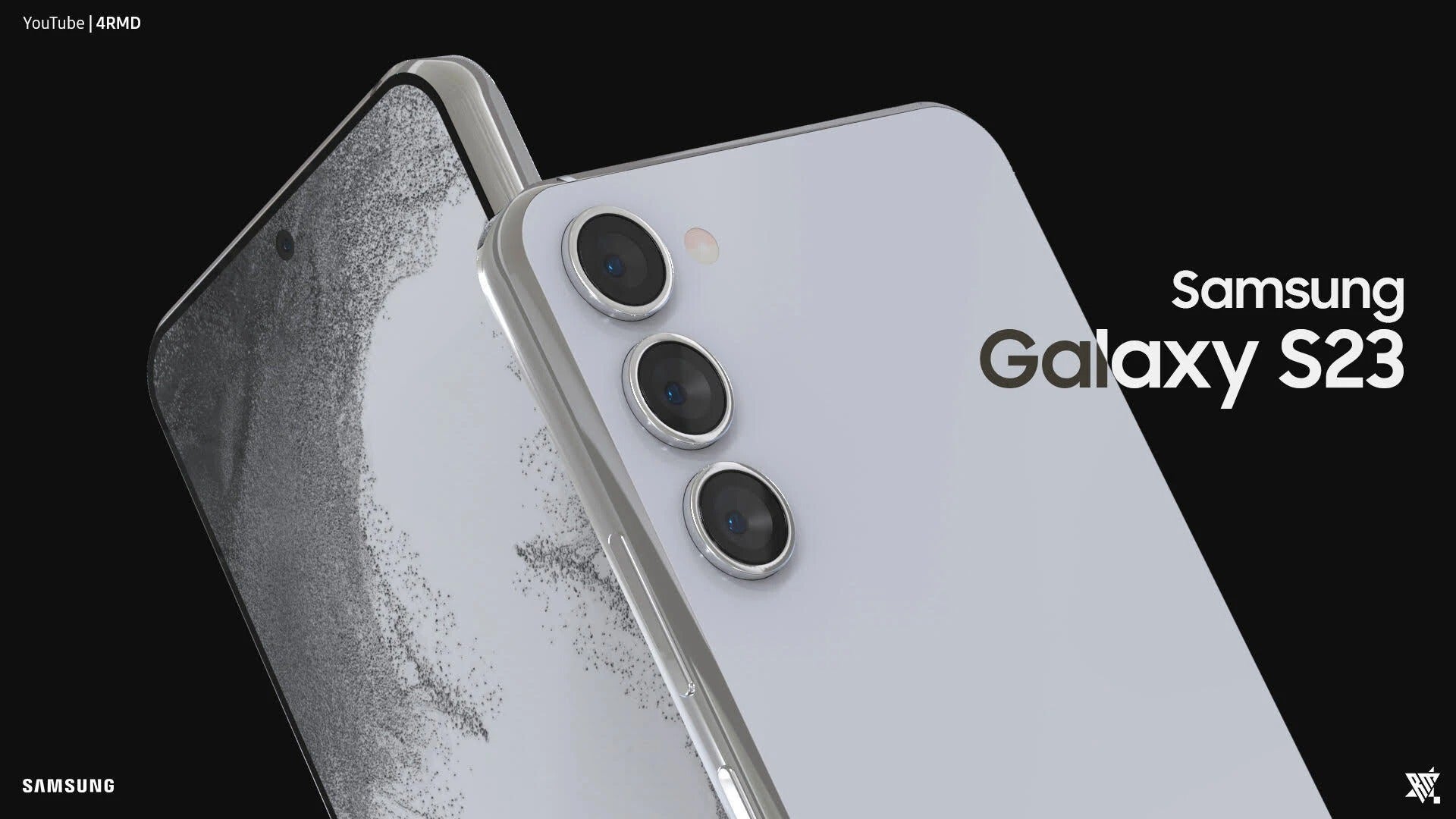
Galaxy S23 based on leaks (Image Credit – 4RMD)
According to leaks and rumors, it seems the S23 won’t change much about the Galaxy S22’s camera module. As per the latest reports, the Galaxy S23 will have the very same combo of cameras on its back — 50 MP main, 12 MP ultra-wide, 10 MP telephoto .
We do assume that there will be some updates in the backend — the post-processing after you press that shutter button, especially with the new Qualcomm chip. But overall, we expect to see the same great photography that the S22 delivers, maybe with a bit of a facelift.

What’s with the two cameras there, buddy? (Image Credit – PhoneArena)
The iPhone 14 on the other hand needed a bit more oomph than what Apple gave it. The Pro models got the new 48 MP sensor and the upgraded ultra-wide camera, the base ones got a slightly bigger — but still 12 MP — main sensor and they inherited the ultra-wide camera from the iPhone 13 Pro.
Now, the iPhone 14 does have an awesome selfie camera — a 12 MP snapper with autofocus that really upped that selfie game. It will be interesting to see if the Galaxy S23 matches that. Rumors do say that it will have a new 12 MP front camera (as opposed to 10 MP in the S22), but we’ve got no other info to go on right now.
Audio Quality and Haptics
The recent Galaxy flagships sound pretty good — with stereo speakers tuned with the AKG know-how. They are loud, a bit middy, but still well-detailed. The iPhone 14 has a bit more of a mid scoop going on, and more audible bass plus more air in the presence. It largely depends on what kind of content you are listening to, but in many cases, the iPhone 14 speakers win out.
As for haptics — the flagship Galaxy phones have been clicking and clacking with very pleasant and reassuring feedback over the last few years. But so have iPhones with their amazing Taptic engine — the one that makes the Apple Watch vibration feel so great.
Battery Life and Charging
One has impressive standby, the other may have great sustained performance.
So, the Galaxy S23 will have a slightly larger battery — 3,900 mAh versus the 3,700 mAh in the Galaxy S22. Add to this the enhanced energy-efficiency that Qualcomm promises for the Snapdragon 8 Gen 2 and we are already expecting better sustained performance.
Typically, iPhones are amazing at holding charge while in standby and they do very well with common tasks like browsing and video-watching. Usually, when it comes to gaming tests, Android phones do better, while Apple’s A15 chip drains the comparably small battery of the iPhone faster.
We’ll see if the story repeats itself when the Galaxy S23 comes out!
Specs Comparison
Well, here’s a good look of what we expect from the data sheets of the two phones. Keep in mind, all Galaxy S23 info is still speculatory:
| Specs | Galaxy S23 | iPhone 14 |
|---|---|---|
| Dimensions | 5.75 x 2.78 x 0.30 inches (146 x 70.6 x 7.6 mm) | 5.78 x 2.81 x 0.31 inches (146.7 x 71.5 x 7.80 mm) |
| Weight | ? | 6.07 oz (172.0 g) |
| Screen | 6.1 inch, AMOLED, 120 Hz, 1080 x 2340 | 6.1 inch, OLED, 60 Hz, 1170 x 2532 |
| Processor | Qualcomm Snapdragon 8 Gen 2 (4 nm), 3.2 GHz, octa-core | Apple A15 Bionic (5 nm), 3.1 GHz, hexa-core, with pentacore GPU |
| RAM | 8 GB LPDDR5x | 6 GB |
| Rear Cameras | 50 MP wide 12 MP ultra-wide 10 MP telephoto |
12MP wide camera: 26mm, f/1.5 12MP ultra-wide camera: 0.5X, or 13mm, f/1.8 |
| Front Camera | 12 MP | 12MP with autofocus |
| Battery Size | 3,900 mAh | 3,279mAh |
| Charging Speeds | 25 W wired 15 W wireless |
20 W wired 15 W wireless MagSafe 7.5 W wireless Qi |
| Price | $799 | $799 |
Summary and Final Verdict
We’ve got two phones that are powerful and reliable, yes. Taken at face value, we’d say the Galaxy is definitely the better deal here — you have a 120 Hz screen (which should be standard in 2022-2023) and you have a triple camera module with a telephoto lens. The iPhone 14, in comparison, feels basic when it lacks those specs, yet costs the same price.
Like the always-mentioned Apple ecosystem — with all of its devices seamlessly talking to one another. If you are in there, with an Apple Watch, AirPods, AirTags, and a MacBook, of course you will probably lean more towards the iPhone. At the same time, you may feel a bit cheated, as the iPhone 14 seems so… uninspired.
So, don’t let the green bubbles bully you, the Galaxies have a lot going for them!
For all the latest Technology News Click Here
For the latest news and updates, follow us on Google News.

